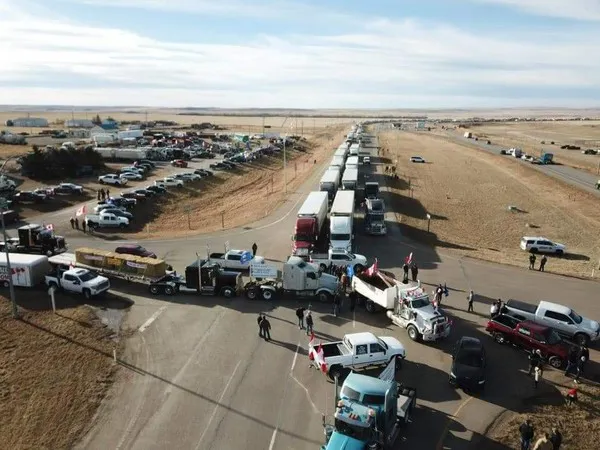Following a three-day protest in Canada’s capital city of Ottawa over the COVID-19 vaccine mandate that Canadian truckers and other essential workers require proof of vaccination to enter the country, the question now is: what is really going to happen with the vaccine mandate? Guy Milette of Courchesne Larose says the mandate, which came into effect January 15, is another pull on a supply chain that’s already being stretched thanks to a variety of factors. However, goods will get through.
“Every company has a different situation,” says Milette, who is also the chair of the Canadian Produce Marketing Association’s board of directors. “In our case, after a quick survey, within the transportation we use, we probably have between 5 to 10 percent of drivers who are not double vaccinated. That means there is 90 percent still out there.”
The first area the mandate will factor in is pricing. “We are used to having transportation charging between $6,000-$9,000-$10,000 at the peak demand,” he says, noting that a $10,000 rate for example happens around the holidays when fewer drivers might be available due to vacation time. However, it’s also the very time retailers want to promote more products. “So with fewer trucks and more demand, there’s imbalanced pricing. The mandate simply adds an extra layer on top of that and we’re seeing prices moving to, we’ve heard, $15,000.”
Better planning in order
The key, says Milette, involves better planning to ensure you have better-priced trucks. “Normally we say we need two trucks to move lettuce today. We can’t do that anymore. If you’re last minute and you want a truck, you will pay $15,000,” he says. “But if you properly plan a day or two or even three days prior, you will have a regular truck that will have a more standard rate. A buyer that does better planning can save $25,000 in a week.”
And what will it mean to retailers and customers? Also increased costs and likely some continued fluctuations of when product will be on shelves. “Our warehouse is full and we have a very good range of product. So if you see a store with empty shelves, chances are the store is short-staffed and has nobody to restock the shelves. We’ve seen that many, many times in the past few weeks,” he says.
However, customers will pay the price though. “Customers should consider not having a very precise shopping list. Some families buy the same thing every week. If your cauliflower is $8, leave it there and cook some root vegetables,” Milette says. “We have a lot of winter vegetables in Canada, mostly root, and there’s very little transportation involved in moving this product. Even though the average price is still up from previous years, it's still a lot less than those products that have a lot of transportation charges.”
 Source: Twitter, Sheila Gunn Reid.
Source: Twitter, Sheila Gunn Reid.
Heavier vs. lighter products
The commodities themselves also factor into the high prices. “Consumers will see a price increase on most products. But they will see a lot of spikes in the pricing of heavy products,” he says. “If you have a load of celery at 65 lb./case, you can only put 800 cases in a truck versus a load of raspberries where you can put 4,000 in a truck. The celery right now, 65 percent of the delivered price is freight. Whereas on raspberries it’s not as much.”
And consumers are likely to become frustrated. “Eventually consumers are going to get fed up--how many cauliflowers can you buy at $8-$9? If consumers aren’t happy about the price of cauliflower, just stop buying it. That has a big effect,” Milette says, noting that pressure doesn’t need to come from consumers alone. “Consumers need to say no but importers and retailers need to say no as well. If a truck calls in and says I can do this for $15,000, we should say forget it.”
 For more information:
For more information:
Guy Milette
Courchesne Larose
Tel: (514) 525-6381
www.Courchesnelarose.com
